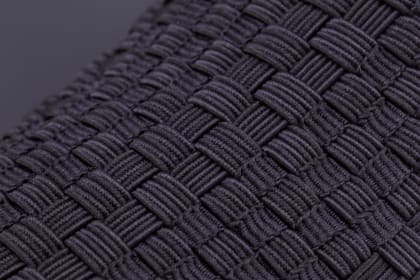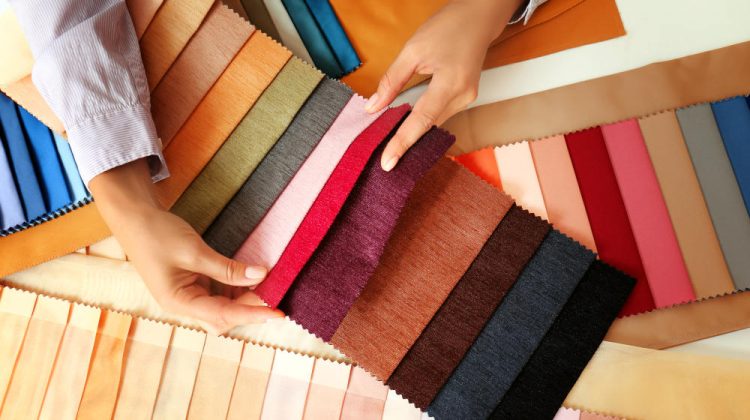Little Known Facts About All 4 Way Stretch Fabrics.
Table of ContentsThe Definitive Guide for All 4 Way Stretch FabricsGetting The All 4 Way Stretch Fabrics To WorkThe 8-Minute Rule for All 4 Way Stretch FabricsThe All 4 Way Stretch Fabrics PDFsExcitement About All 4 Way Stretch FabricsUnknown Facts About All 4 Way Stretch Fabrics5 Simple Techniques For All 4 Way Stretch Fabrics
As I likewise want UV defense from my garments when I go out, I would certainly choose a densely woven cotton fabric. One even more factor to consider when buying the fabric is the means it will certainly after cleaning.A safe bet would be to buy at the very least 10% extra textile. If you can acquire preshrunk textile, this is the best.

If you are matching the shade, like picking the lining for the major material or picking fabric to add as trim, this is especially essential. The material display rooms will typically have a light well where you can see the material in sunlight (or a window with good light from outside).
About All 4 Way Stretch Fabrics

Many materials have to do with 44 wide. When you most likely to buy textile, price quote just how much you desire first and after that most likely to the shop. Look into this article to know the response to this often listened to concern "Just how much textile do I need". With a fat quarter, you will obtain an 18 wide by 22 long.
These are readily available in the stores I frequent as cut pieces they are primarily prized low and several of them, when they are last off the bolt, treasured very low. You will certainly have to ask the salesmans for pieces like that. Some great bargains can be had this means. In dressmaking, we purchase material by the yard/meter.
The Greatest Guide To All 4 Way Stretch Fabrics
In a quarter of a lawn, you get a 9 by 44 strip of material, which has to do with 22 cm in length. It is always much better to get wider towel. According to the width of textiles, they may be called single-width and double-width. Solitary width is normally up to 49 inches in width and double width up to 60.
You can discover more concerning lawn to meter conversion below. Take a look at this blog post on reviewing a tape action Select materials that are not as well hard or rigid, or you would not be comfortable in them. Linen, Denim, flannel, For colder environments, pick wool (100% in addition to wool blends) woollen tweeds, woollen crepe; it generally depends on what trousers you are speaking about Tailored pants, Unstructured Pant, Combined, Denim.
All cotton materials are good for youngsters. Knit fabrics are also fantastic for children you can go for wool knits.
The 10-Minute Rule for All 4 Way Stretch Fabrics
Take a look at this article on the best fabric for clothing for babies and children for more detail on this subject. Light-weight cotton is my favorite to sew skirts. Cotton lawn cloth in lovely prints is terrific. Silk jersey is a wonderful material for sewing skirts, as is Ponte Roma knit textile.
Drapey rayons, soft woollen, lycra blends, and stretch velours are all appropriate for stitching skirts. Woollen (Woollen crepe has an excellent drape and offers sufficient structure for coats; woollen tweeds are great too), Linen & Flannel. Velour (Look Into the slouchy velvet sports jacket tutorial, by the method). Light-weight knits are good for free-flowing coats similar to this waterfall coat pattern Raw silk, satin, taffeta, velour, Lace, silk chiffon, and Organza are all terrific for making outfits.
You can purchase medium-weight fabrics with some spandex/elastane added for a suitable bodycon-type outfit. For drapey dresses, you can pick light-weight textiles. Jacket has a drapey fit similar to this. Crepe, challis, and charmeuse are all drapey materials fit for this style. Look into these articles: Finest fabric for making informal gowns and tops; Names of different dresses. Rayon, Acetate, and cotton lining products are widely used.
Light-weight cotton material, Cambric, Chintz, Twill, Faille, Seersucker, Poplin, lightweight woven broadcloth, batiste, bed linen, eyelet benefit making shirts and blouses. I love chiffon shirts. Silky satin material benefits making ventilated tops. Take a look at the post on the 7 finest textiles for making t-shirts. Making serapes and scarves require different considerations for the fabric check out this message on the materials for making headscarfs When purchasing formed material (a lot of the patterned material comes with a size of 45 or 54 inches), there will certainly be pattern repeat in these textiles, and this ought to be taken into account when reducing material as well as purchasing them i.e., if you intend to match the patterns at the seams.
10 Easy Facts About All 4 Way Stretch Fabrics Explained
This post has the names of all the checkered patterns and this, red stripe patterns. The concepts will certainly be distributed in a planned fashion on the fabric. You may observe occasionally If the print is not positioned on the material correctly, it can not be matched or lined up when constructed without misshaping the material and the hang of the garment.


The material weight is reliant on many elements like the weave, fiber kind, etc and is normally denoted by GSM. GSM can vary from 60 -700; 700 being the GSM of really top notch woolen fabric.
However one point you need to keep in mind is that higher textile weight does not represent greater textile top quality (woven stretch fabric). It simply is an indication of the suitability of the material for a specific task. You can pass by high textile weight fabric denim for a light-weight floating shawl. Recognizing the textile weight is useful when comparing the same kind of fabrics, however even this will depend upon its application.
Examine out the checklist of the 70+ various material surfaces and treatments. In short, the most essential criteria to look for in the material you get are as complies with. The number of threads per inch of fabric (yarns-per-inch). Higher the thread matter greater the number of threads woven per inch, and the higher the high quality.
The Facts About All 4 Way Stretch Fabrics Uncovered
This is really important in any material. In top notch fabric, this balance (either in numbers or in size) will always be kept. Processes used on fabric to enhance appearance and performance. The fibers that are woven to make the fabric will either be as a single strand or will be formed by incorporating two yarns (twisted).
A two-ply thread is premium to a single-ply thread.
If you are preparing to start a brand-new embroidery task, picking a material will certainly be the most crucial step once you determine what you intend to make. After you've gone to all the difficulty and cost of purchasing the stitching machine you like, a pattern you like, and a fabric you love, you desire the completed product to be a success? One way to accomplish that is to start by seeing to it your fabric is genuinely ideal for the job.
Some Known Details About All 4 Way Stretch Fabrics
If you're making a patchwork, you'll instantly want to use quilter's weight cotton for ideal results. What if you desire to make a thing of garments? Just how do you know which textile will provide you the very best result? Choosing a fabric just due to the fact that you like the print or layout on it isn't always the very best approach.
You click for info understand. So in order to avoid doing an entire project for basically absolutely nothing, we've put together some pointers to aid you choose which textile is appropriate for your task. Let's state you already have a project in mind; how do you find the right textile for it? One method is to consider comparable products in storesor ones you currently have.
Believe of the characteristics you desire the completed product to have. Do you desire a strong shade or a print? If you are making a non-wearable item such as a cushion cover or potholder, use a durable fabric such as canvas.
There is a lot info out there regarding fabrics, their qualities, and their uses, it can reach be frustrating! Don't attempt to take it in all at as soon as; simply start with the job at hand. Learn all you can regarding the fabric you use for this set task.